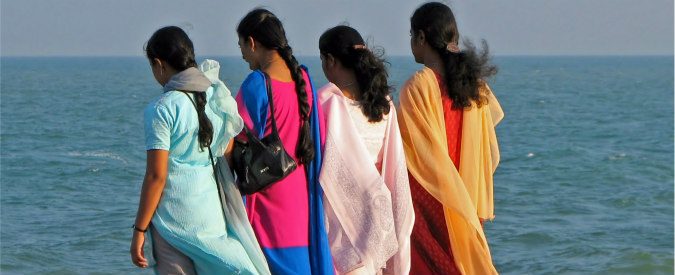
Climate change puts women's health increasingly in danger
The United Nations High Commissioner for Human Rights published the first Report on the relationship between human rights and climate change at Geneva in March 2009. This was indeed an important moment for the international community because the social, cultural and economic consequences of the phenomenon were formally recognized.
Climate change exacerbates the state of discrimination and poverty in which millions of people find themselves. Moreover, paradoxically, these are people who have practically done nothing to cause the phenomenon. Women in developing countries are still among the groups subject to the highest degree of risk, with consequences that are often quite dramatic with respect to their sexual and reproductive health.
Sudden meteorological events may induce families to arrange for their daughters to get married at an early age so as to provide them with a safer future in economic terms. This often involves abandoning school, and the possibility of early pregnancies, which may involve risks and especially in the absence of access to appropriate health facilities.
The loss of ecosystems and fundamental resources for survival may result in a greater burden on women with respect to the need to secure a family's livelihood. Domestic work and caregiving are still predominantly female duties in many countries and walking an extra 10 kilometres every day to collect water may result in spontaneous miscarriages or in premature births with potentially fatal complications.
Women are more likely to suffer from malnutrition as there are still communities that resort to 'nutritional hierarchies', in which men have precedence over females in relation to food resources. According to the FAO, in South and Southeast Asia 45-60% of women of childbearing age are below their normal weight and 80% of pregnant women present iron deficiencies.
All of this occurs as a result of cultural rules and discrimination and the definition of female gender roles whereby their capacity to cope with risky situations is determined. And yet, thanks to their profound knowledge of the communities they live in and their role in reproduction, women are central figures in the development and also with respect to the possibility to establish greater resilience to climate change.
Data collected by the World Health Organization indicate that over 200 million women worldwide have no access to modern contraceptives. As a result, 76 million unintended pregnancies occur every year, involving very high human and economic costs. Avoiding pregnancy or an infectious disease during a period of scarce resources or during a catastrophic event involves a need to ensure greater security and economic independence for women and their families. Furthermore, avoiding such problematical conditions might also slow down the high rate of growth of populations, thereby reducing demographic pressure on the environment.
Yet when health concerns are considered within the framework of environmental and climate issues, sexuality and reproduction are still not considered to be fundamental factors in terms of people's rights. Most 'disaster relief packages', which provide personal supplies in emergency situations, do not include tampons and contraceptives without mentioning a frequent lack of gynaecological services and treatment during emergencies.
Making sure women have access to education and allowing couples to prevent unintentional pregnancies will result in an improvement of the socio-economic status of entire communities, reducing environmental pressure and enhancing the response to challenges deriving from climate change. However, this will occur only if climate and development policies and projects are integrated with a gender perspective, taking into account the role of women and their rights, including sexual and reproductive health.
Chiara Soletti
Published for Italian Climate Network on Il Fatto Quotidiano.
